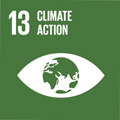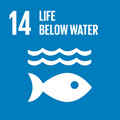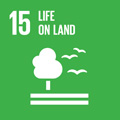- Docente: Beatrice Vitali
- Credits: 8
- SSD: BIO/19
- Language: Italian
- Moduli: Beatrice Vitali (Modulo 1) Laura Menotti (Modulo 2) Laura Menotti (Modulo 3)
- Teaching Mode: In-person learning (entirely or partially) (Modulo 1); In-person learning (entirely or partially) (Modulo 2); In-person learning (entirely or partially) (Modulo 3)
- Campus: Bologna
- Corso: First cycle degree programme (L) in Biotechnology (cod. 8005)
Learning outcomes
At the end of the course, the student possesses the fundamental notions on the structure and functions of the prokaryotic cell, on microbial metabolism and related regulatory mechanisms, on microbial growth and the main environmental factors that condition it. The student learns the different strategies used by microorganisms to produce energy: phototrophy, chemolithotrophy, chemorganotrophy and fermentation. The student also possesses the basic notions on the structure and functions of components of viral particles, mechanisms of virus penetration into the cell, viral replicative strategies as a function of the viral nucleic acid. At the end of the laboratory, the student has the basic knowledge of sterilization techniques and work in sterility, and of techniques for the manipulation, cultivation, identification and titration of microorganisms (bacteria and viruses).
Course contents
Module 1: General microbiology
Basic principles of microbiology.
Principles of microscopy: optical microscopy and electron microscopy.
Evolutionary history and microbial diversity.
Structure and functions of prokaryotic cell: cytoplasmic membrane, cell wall, outer membrane, cell surface structures, endospores and flagella.
Microbial metabolism: catabolism and anabolism.
Regulation of microbial metabolism and other regulatory systems: feedback inhibition, gene control, taxis regulation, quorum sensing and stringent response.
Microbial growth: growth curve, culture media, microbial growth assessment methods, environmental factors that control microbial growth.
Phototrophy: anoxigenic and oxygenic photosynthesis.
Chemolithotrophy: oxidation of hydrogen, sulfur compounds, iron, nitrification, nitrogen fixation.
Catabolism of organic compounds: chemorganotrophy and fermentation.
Main groups of pathogenic bacteria.
Module 2: Virology
Definition of viruses, classification criteria, composition, structure. Viral growth curve and phases of the viral replication cycle. Productive, abortive, persistent and latent infections. Mechanisms of virus entry into the host cell and transport of subviral components to different cellular compartments.
Animal viruses: properties of the replicative viral groups I-VII; replication and gene expression strategies of the different virus groups in relation with the organization of the viral genome (DNA viruses with double-stranded or single-stranded genome; RNA viruses with positive or negative polarity, monopartite or segmented genomes; retroviruses, hepadnaviruses). Genetic economy strategies. Mutations rate versus genome stability and/or size. Hints on virus origin and evolution: theories and mechanisms. Hints on subviral agents: viroids and satellites.
Module 3: Laboratory of Microbiology
The Laboratory course is divided into five days. The program focuses on:
- Explanation of the rules of safety, personal protective equipment and rules of differential disposal of the waste produced in a laboratory of microbiology and virology.
- Preparation of media for the growth and isolation of bacteria.
- Working in sterile conditions.
- Inoculation of bacterial species on solid, liquid and semi-solid media, in different conditions of oxygen availability. Titration of a bacterial. Bacterial transformation.
- Gram staining.
- Cultivation of a virus (phage): host preparation, plaque purification, stock preparation, titration
- Observation of the cytopathic effect induced by animal viruses in cell cultures ; detection of the expression of a transgene ; immunostaining of plaques.
- Transfection of mammalian cell cultures with a plasmid carrying a reporter gene; theory of the technologies for the generation of recombinant viruses.Readings/Bibliography
Brock. Biologia dei microrganismi. Microbiologia generale, ambientale e industriale. 14/Ed. Pearson.
Biologia dei Microrganismi a cura di Gianni Dehò ed Enrica Galli. Casa Editrice Ambrosiana.
Prescott. Microbiologia Generale (Willey, Sherwood, Woolverton). McGraw-Hill.
Teaching methods
The course consists of 8 credits of which 6 CFU of lectures and 2 CFU of laboratory. The modules of General Microbiology (1) and General Virology (2) are carried out as classroom lectures. Module 3 (Laboratory) consists of 30 hours of practical training in individual workplace. Students are divided in two groups following teacher’s guidelines. The teacher explains the theory of the experiments step-by-step. Each student prepares individually or in group the materials necessary for carrying out the experiments. Students are supervised by the teacher and tutors during the course of the experiments. Results are discussed both individually and in group. Self-evaluation test near the end of the course.
In consideration of the types of activities and teaching methods adopted, the attendance of this training activity requires that all students carry out modules 1 and 2 by e-learning and participate to the module 3 of specific training on safety and health in study places. Information on dates and methods of attendance of module 3 can be consulted in the specific section of the degree program website.
Assessment methods
The exam consists in written tests. The dates of the written tests will be published on almaesami.
Teaching tools
For modules 1 and 2, the topics of the course are explained to students in the form of power-point presentations (available in the platform VIRTUALE). For module 3 (Lab) teaching activity is carried out at the laboratories (Beverara 123, Bologna) fully equipped, with 50 individual workstations for students, 25 laminar flow hoods, optical microscopes, a fluorescence microscope, incubators, audiovisual equipment for theoretical lessons. Detailed protocols for the lab experiences will be also provided.
Office hours
See the website of Beatrice Vitali
See the website of Laura Menotti
See the website of Laura Menotti
SDGs




This teaching activity contributes to the achievement of the Sustainable Development Goals of the UN 2030 Agenda.
